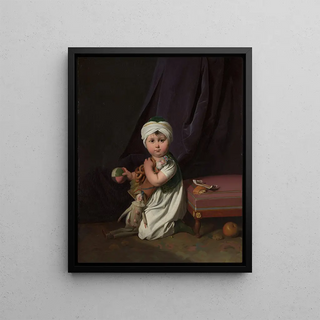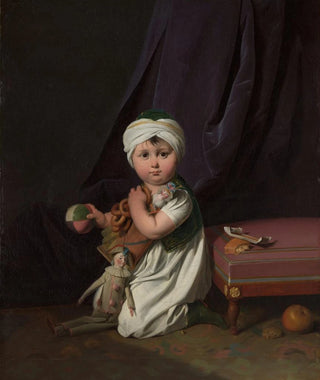Art print | Portrait of a Boy - Louis Léopold Boilly


View from behind

Frame (optional)
In the vast panorama of 18th-century French art, the work "Portrait of a Boy" by Louis Léopold Boilly stands out for its delicacy and authenticity. This painting, capturing a suspended moment in time, invites us to delve into the universe of a young boy whose expression, both innocent and thoughtful, seems to tell a story far deeper than one might imagine. Boilly's mastery in depicting human emotions and intricate details makes this piece a true masterpiece that transcends eras. Through this art print, the artist manages to immortalize not only the face of a child but also the very essence of his being.
Style and uniqueness of the work
Louis Léopold Boilly's style is imbued with a lightness and vibrancy that are fully expressed in "Portrait of a Boy." The artist excels in portraiture, capturing with finesse the nuances of light and the subtleties of expressions. In this work, the chosen color palette is both soft and vibrant, creating a harmonious contrast that draws the eye. The boy's face, illuminated by gentle light, expresses an almost childlike curiosity, while his sparkling eyes seem to invite the viewer to share a secret. The composition, carefully balanced, allows each detail to shine, from the textures of the clothing to the reflections of the skin, demonstrating exceptional craftsmanship and meticulous attention to the elements that make up the portrait.
The artist and his influence
Louis Léopold Boilly, born in 1761, is often regarded as one of the pioneers of realism in painting. His work is characterized by a deep interest in everyday life and the portraits of his contemporaries, enabling him to capture the very essence of the society of his time. Boilly skillfully combined technique and emotion, influencing many artists who followed in his footsteps. His innovative approach, blending portraiture with narrative elements, paved the way for a new way of seeing and representing individuals. In doing so, he helped establish a more intimate connection between the artwork and the viewer, transforming

Matte finish

View from behind

Frame (optional)
In the vast panorama of 18th-century French art, the work "Portrait of a Boy" by Louis Léopold Boilly stands out for its delicacy and authenticity. This painting, capturing a suspended moment in time, invites us to delve into the universe of a young boy whose expression, both innocent and thoughtful, seems to tell a story far deeper than one might imagine. Boilly's mastery in depicting human emotions and intricate details makes this piece a true masterpiece that transcends eras. Through this art print, the artist manages to immortalize not only the face of a child but also the very essence of his being.
Style and uniqueness of the work
Louis Léopold Boilly's style is imbued with a lightness and vibrancy that are fully expressed in "Portrait of a Boy." The artist excels in portraiture, capturing with finesse the nuances of light and the subtleties of expressions. In this work, the chosen color palette is both soft and vibrant, creating a harmonious contrast that draws the eye. The boy's face, illuminated by gentle light, expresses an almost childlike curiosity, while his sparkling eyes seem to invite the viewer to share a secret. The composition, carefully balanced, allows each detail to shine, from the textures of the clothing to the reflections of the skin, demonstrating exceptional craftsmanship and meticulous attention to the elements that make up the portrait.
The artist and his influence
Louis Léopold Boilly, born in 1761, is often regarded as one of the pioneers of realism in painting. His work is characterized by a deep interest in everyday life and the portraits of his contemporaries, enabling him to capture the very essence of the society of his time. Boilly skillfully combined technique and emotion, influencing many artists who followed in his footsteps. His innovative approach, blending portraiture with narrative elements, paved the way for a new way of seeing and representing individuals. In doing so, he helped establish a more intimate connection between the artwork and the viewer, transforming






